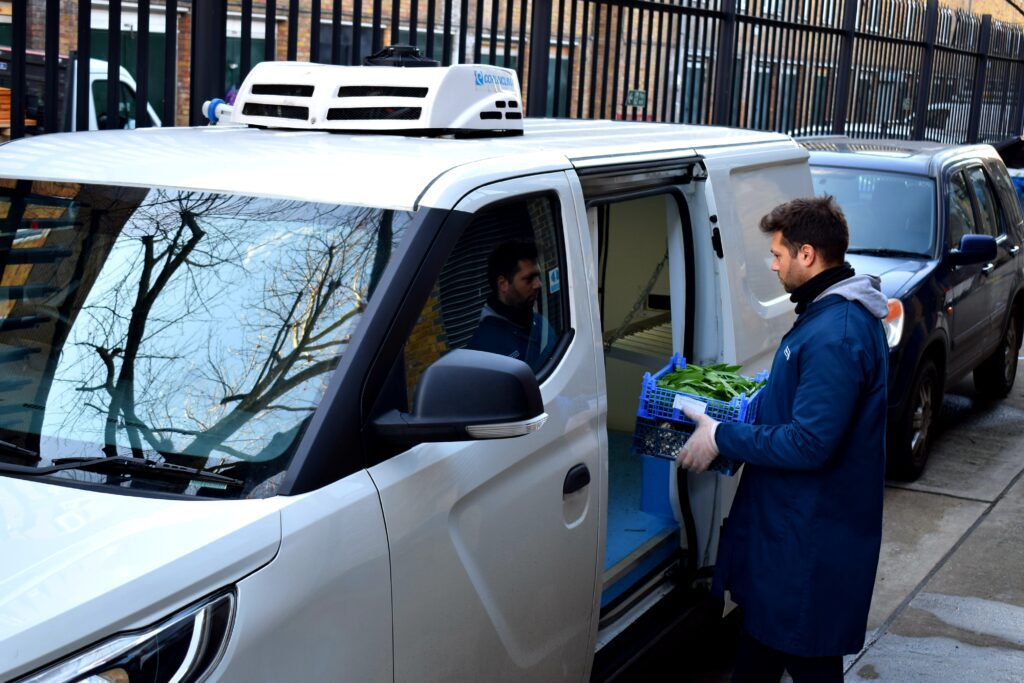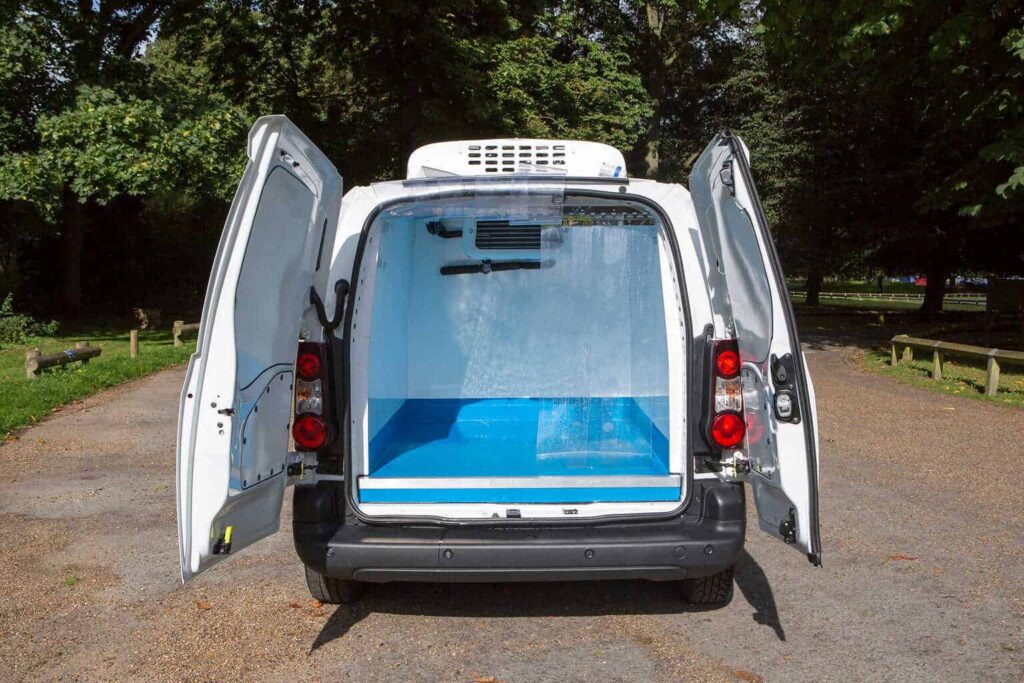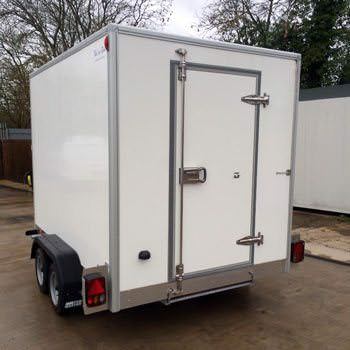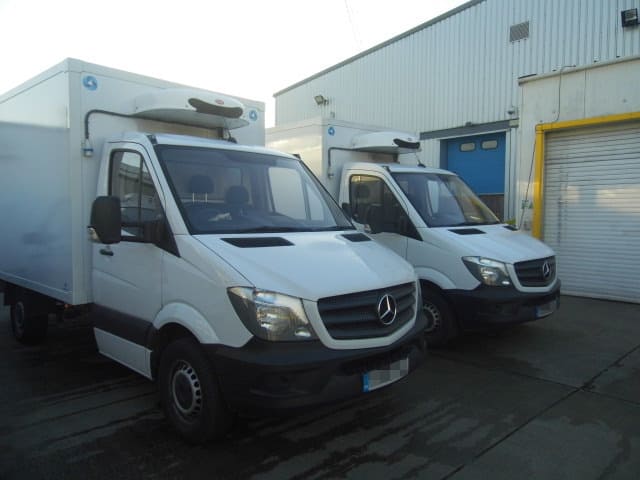Refrigerated vans play a crucial role in transporting perishable goods, from fresh produce and dairy to medicines and flowers. Ensuring that these products remain at the correct temperature is essential for quality, safety, and compliance with food and health standards.
Why Proper Loading Matters
Maintaining a stable temperature inside your van protects the integrity of your goods. Perishable products, such as meat or dairy, can quickly spoil if their temperature rises just a few degrees above the recommended range.
By loading your van correctly, you help keep cool air circulating and prevent hot spots.
Regulatory Compliance
Businesses dealing with food, pharmaceuticals, or other temperature-sensitive products must follow strict regulations. In the UK, the Food Standards Agency (FSA) has guidelines on temperature control during transport.
Reduced Energy Consumption
When goods are loaded properly, the refrigerated system does not have to work as hard to maintain the set temperature. Obstructions, blocked vents, and poorly secured cargo can lead to air circulation problems, causing the refrigeration unit to use more energy. Good loading practices can help lower fuel and maintenance costs.
Different Types of Refrigerated Vans and Designs
FridgeXpress provides a wide selection of refrigerated vans for short-term rental or long-term hire. Here are some of the most common types and key features to look out for:
Chiller Vans
Chiller vans typically maintain temperatures between 0°C and 8°C, making them suitable for transporting fresh produce, dairy, sandwiches, and other chilled items. They are equipped with insulation and a cooling unit that keeps the interior environment at the desired chiller temperature.
Best for: Fresh produce, flowers, dairy, and similar items that need to be kept cool but not frozen.
Freezer Vans
Freezer vans can maintain much lower temperatures, usually around -18°C or below. They are crucial for transporting frozen goods such as ice cream, frozen meals, and frozen meat. Freezer vans have more robust insulation and stronger refrigeration units to maintain these sub-zero temperatures, even in warmer weather.
Best for: Frozen foods, ice cream, meats requiring sub-zero transport.
Dual or Multi-Temperature Vans
Certain businesses need to transport both chilled and frozen goods simultaneously. Multi-temperature vans have separate compartments, each with its own temperature controls. These vans are ideal if you handle a variety of products in a single journey. The flexibility to set different compartments at different temperatures helps you keep items in peak condition.
Best for: Distributing a mix of chilled, ambient, and frozen products in one trip.
Box Refrigerated Trucks
For larger scale operations, refrigerated box trucks provide more space and can accommodate bigger deliveries. They have robust insulation and can maintain specific temperature zones. Box trucks are beneficial if you need to transport large quantities of temperature-sensitive goods.
Best for: Bulk deliveries of perishable goods, large-scale catering, or events.
Tips for Loading Your Refrigerated Van
Before you load any product, it is advisable to run the refrigeration unit to bring the interior to the correct temperature. Loading a warm van with chilled or frozen goods can cause a rapid temperature spike, which might compromise product quality. A pre-cooled environment helps you maintain the correct temperature from the start.
Check Products’ Core Temperatures
Make sure your products are at the required temperature before loading. For example, if you are transporting fresh meat at 2°C, ensure it is already at that temperature prior to loading. This prevents the van’s refrigeration system from working overtime to bring items down to a safe level.
Plan the Load in Advance
Organising the load is crucial for maintaining temperatures and managing efficient deliveries. Separate your products according to their temperature requirements (chilled, frozen, ambient). If you have a multi-temperature van, designate the correct compartment for each product type.
- Heaviest items first: Place them at the bottom to prevent crushing lighter goods and to maintain stability.
- Label and group items: Use clear labels, so you know what is in each package. Grouping items by customer or drop-off location can speed up unloading.
Allow for Airflow
One of the key factors in temperature maintenance is proper airflow. When products are stacked too tightly or pushed against the cooling unit, they can block the vents and restrict the circulation of chilled air. To avoid this:
- Leave small gaps between pallets or boxes to let air flow around them.
- Avoid piling goods directly against the interior walls where the refrigeration vents are located.
- Never stack goods above the load line in the van, as it can obstruct the circulation from the evaporator fan.
Use Insulated Covers or Curtains
If you are making multiple drops and opening the rear doors frequently, consider using strip curtains or insulated covers. These help keep cold air in and warm air out, even when the doors are open for short periods.
Monitor Temperature
Many refrigerated vans come with digital temperature displays. Make a habit of checking these readouts regularly. If the temperature starts to rise beyond the set range, investigate immediately. It might be an issue with the refrigeration unit or a problem with the way the cargo is arranged.
Organising Deliveries for Optimal Temperature Control
One of the best ways to keep goods at the correct temperature is to minimise the time doors spend open. Plan your deliveries in an order that makes sense both geographically and by product type. If you have items that need to remain at a strictly controlled temperature, try to deliver these first to reduce risk.
Every time you open the van doors, warm air rushes in, affecting the internal temperature. To minimise this, plan drop-off sequences carefully. If you can, have a system where the correct items for each drop are placed near the doors, so you can quickly access them without rifling through the entire load.
Back-Up Plans for Delays
Even with careful planning, unforeseen circumstances can occur, like traffic jams or vehicle breakdowns. Have a contingency plan in place, such as:
- Contact details for your main clients to inform them of any changes.
- Access to a back-up vehicle, if possible, especially if you deal with high-value or highly perishable goods.
- Insulated containers or coolers for temporary storage during unexpected delays.
Benefits of Renting with FridgeXpress
When you choose a reliable provider like FridgeXpress for your refrigerated van rental or long-term hire, you gain access to well-maintained vehicles designed for optimal temperature control. Here are some key benefits of partnering with us:
- Wide Range of Vehicles: From small chiller vans for local deliveries to larger freezer vehicles for long hauls, we have solutions for every type of cargo and distance.
- Flexible Hire Options: Whether you need a van for a day, a week, or on a long-term contract, we can tailor our services to your specific needs.
- Top-Notch Maintenance: All our vehicles undergo rigorous inspections and servicing to ensure they are in prime condition. This reduces the likelihood of breakdowns and helps maintain consistent temperatures.
- Expert Guidance: Our team can help you select the right type of van for your particular cargo, advising on best practices for loading, handling, and temperature control.
- Emergency Support: Should a problem occur on the road, our support network will help you get back on track as soon as possible.
Different types of refrigerated vans, from simple chiller vans to multi-temperature models, offer specialised solutions for a range of products. Whether you are transporting fresh fruit, frozen meats, or temperature-sensitive pharmaceuticals, choosing the right vehicle is critical.
At FridgeXpress, we provide comprehensive refrigerated van rental and long-term hire services, ensuring you have access to reliable, well-maintained vehicles designed to keep your products safe and secure.
Contact FridgeXpress today to find out more.




